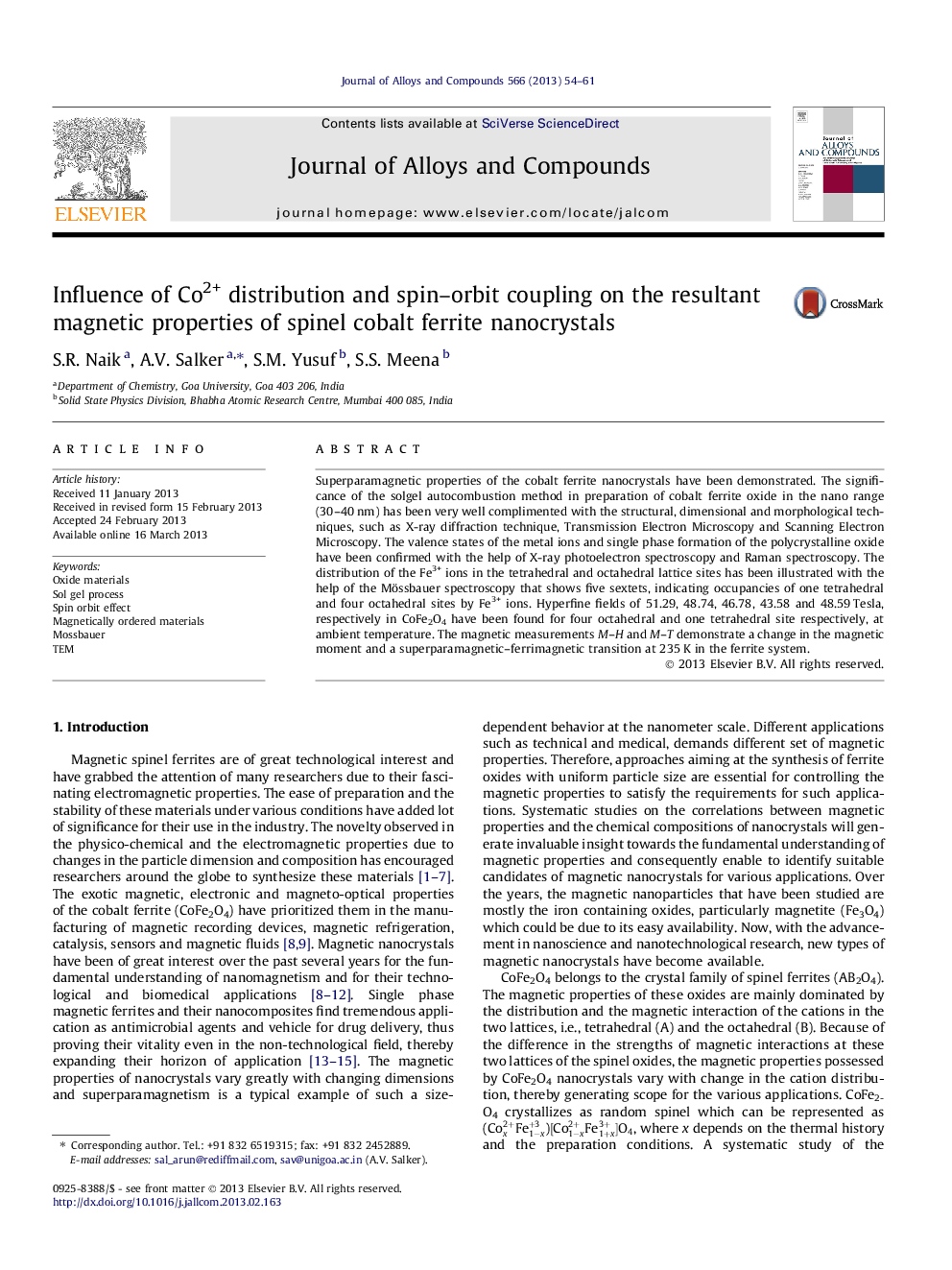| کد مقاله | کد نشریه | سال انتشار | مقاله انگلیسی | نسخه تمام متن |
|---|---|---|---|---|
| 1614064 | 1516327 | 2013 | 8 صفحه PDF | دانلود رایگان |

• Cobalt ferrite oxide is synthesised by sol–gel autocombustion method.
• A reordering in distribution of the metal ions in the lattices is observed.
• The compound display brilliant superparamagnetic properties.
• The spin–orbit coupling originating from cobalt ions play a key role.
Superparamagnetic properties of the cobalt ferrite nanocrystals have been demonstrated. The significance of the solgel autocombustion method in preparation of cobalt ferrite oxide in the nano range (30–40 nm) has been very well complimented with the structural, dimensional and morphological techniques, such as X-ray diffraction technique, Transmission Electron Microscopy and Scanning Electron Microscopy. The valence states of the metal ions and single phase formation of the polycrystalline oxide have been confirmed with the help of X-ray photoelectron spectroscopy and Raman spectroscopy. The distribution of the Fe3+ ions in the tetrahedral and octahedral lattice sites has been illustrated with the help of the Mössbauer spectroscopy that shows five sextets, indicating occupancies of one tetrahedral and four octahedral sites by Fe3+ ions. Hyperfine fields of 51.29, 48.74, 46.78, 43.58 and 48.59 Tesla, respectively in CoFe2O4 have been found for four octahedral and one tetrahedral site respectively, at ambient temperature. The magnetic measurements M–H and M–T demonstrate a change in the magnetic moment and a superparamagnetic–ferrimagnetic transition at 235 K in the ferrite system.
Migration of Co2+ ions to the tetrahedral site reduces the strain and in turn stabilizes the structure. The resultant change in L–S coupling reflects on the magnetic properties.Figure optionsDownload as PowerPoint slide
Journal: Journal of Alloys and Compounds - Volume 566, 25 July 2013, Pages 54–61